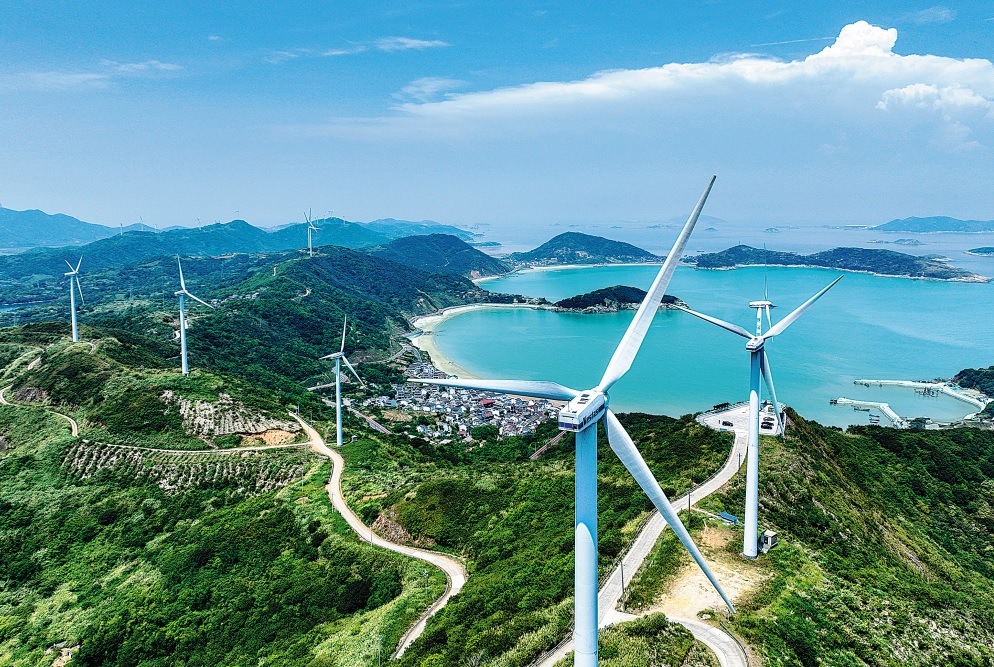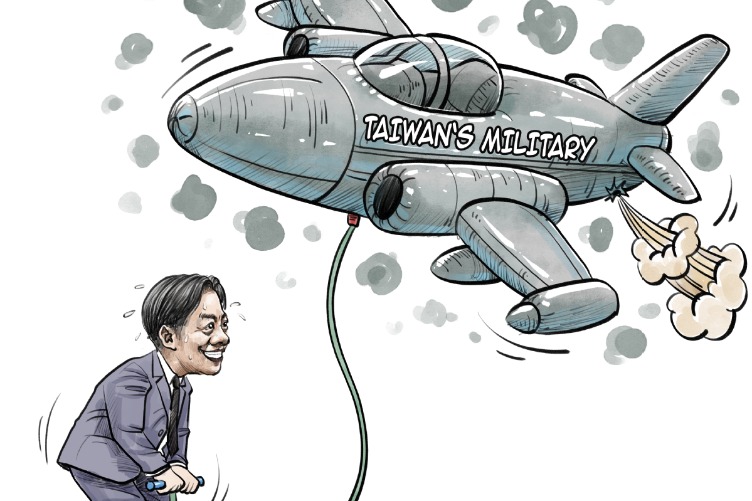Experts' take on high temperatures

Climate change threatens agricultural output
Han Rui, Liu Buchun and Mei Xurong

Since the beginning of this summer, northern China has been experiencing abnormally high temperatures and low precipitation. For instance, in the Huang-Huai region (Northern China Plain) and some other parts of northern China, temperatures were 2-4 degree Celsius above normal while precipitation was more than 80 percent below normal from May 6 to 16.
While daily maximum temperature in most areas was above 32 C, in some areas the temperature was as high as 40 C, indicating the early arrival of hot and scorching weather, though the rainfall on May 17-19 helped lower the temperature to some extent and replenish the soil. However, according to the China Meteorological Administration, high temperatures are expected to continue.
Last year, for instance, the Yangtze River Basin, despite the "triple" La Ni?a event, experienced the most severe drought since reliable record-keeping began. During the prolonged drought period, China experienced an extremely unusual phenomenon: while the northern region was battered by floods, the southern region was in the grip of drought. The drought persisted throughout the summer, fall and winter, resulting in dried-up reservoirs and lower water level in rivers, which reduced power generation, disrupted water supply and caused severe damage to crops.
According to the forecasts of the World Meteorological Organization and the National Climate Center, the world will move into El Ni?o in summer, with almost the whole of China, except for the northeastern region, experiencing high or higher than usual temperatures. Also, some places in the middle reaches of the Yangtze River could experience high temperatures and drought or drought-like conditions this summer, though the intensity is likely to be less than last year.
The water flow rate of a river and a reservoir's storage capacity determine the amount of power that can be generated and the areas that can be irrigated by the water released by the dam, thus directly affecting agricultural production. The Yangtze River Basin has the richest water resources in China and thus the highest hydropower generation capacity. In fact, the region accounts for more than 40 percent of China's total hydropower generation, and supplies surplus power to the eastern coastal region. But the heavy reliance on hydropower makes the region highly susceptible to changing weather and climate conditions.
Taking Sichuan province as an example, in 2021, the province's total power generation was 453 billion kilowatt-hours, with hydropower accounting for 353 billion kilowatt-hours, or 82 percent of the total, which supplied one-third of the hydroelectricity to the eastern coastal region. Being the largest hydropower producing province, Sichuan was spared the nationwide power cuts in 2021. But the decline in rainfall by 30 percent in July and 60 percent in August 2022 severely curtailed its hydropower generation capacity. As such, the electricity-surplus province had to seek electricity from other provinces to meet the local demand.
China's southwest region, too, has been experiencing drought since the beginning of this year, with precipitation being more than 80 percent below normal and rainfall 20-30 below average. This reduced the Yangtze's water flow rate by 20-30 percent from January to April, with some places in the middle reaches of the river witnessing a 30-50 percent decrease in the water flow rate. In fact, since the second half of 2022, several major hydropower producing provinces in southwest China, including Yunnan, are witnessing significantly reduced water flow rates, and reduced reservoir and depleting groundwater levels, which have affected hydropower production.
To overcome the problem, Yunnan has taken multiple measures including restricting the use of electricity.
Frequent heat waves and extremely high temperatures, prolonged droughts and severe floods are causing soil erosion, reducing crop yield and affecting crop quality. Also, due to high temperatures and droughts, crops become less resistant to pests and diseases, further reducing crop yield.
To better protect crops, the authorities should adhere to the principle of "preventing disasters to increase production, minimizing losses to increase food supply". They should also take measures to prevent severe floods and tackle other natural disasters, in order to minimize crop loss.
First, the early warning system against, and monitoring of, disasters need to be strengthened. Economic and human losses can be minimized by dividing the areas, categorizing the types of disasters, strengthening the response system and contingency plans, increasing the reserves of relief materials and technical preparations, and issuing timely warnings against natural disasters.
Second, it is important to form scientific and technological support groups, and expert guidance teams in order to launch targeted and efficient rescue and relief operations in disaster-hit areas, and safeguard agricultural production.
And third, pest and disease control should be strengthened. For example, the mechanism to issue early warnings against major pests and diseases such as the fall armyworm in corn fields and migratory pests in paddy fields should be strengthened, and efficient preventive measures implemented to minimize the damage caused by pests and diseases, so as to ensure food security.



The views don't necessarily reflect those of China Daily.































